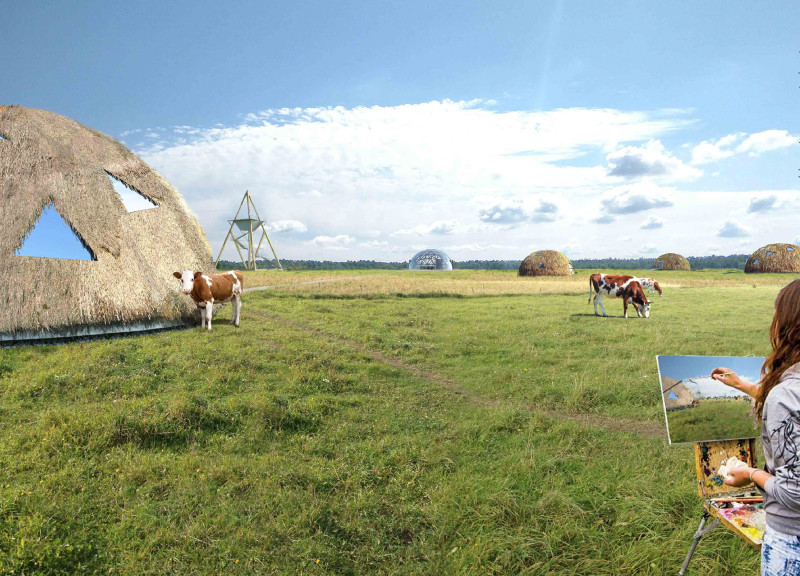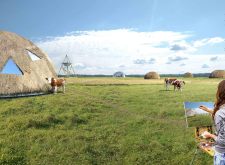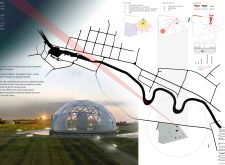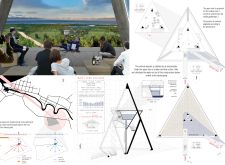5 key facts about this project
The Pavilosta Poet Huts project is located along the Baltic Sea, designed to encourage reflection and community interaction within its space. The project connects the built environment to the natural landscape. A central tower serves as a landmark while flexible residential units surround a multi-functional area that fosters social engagement among visitors and residents alike.
CENTRAL TOWER
The tower stands as the project's main feature, creating a vertical element that ties the different functions of the area together. It acts as a lookout point, providing views over the sea. As a visual reference for those navigating the site, the tower enhances the overall experience. It symbolizes how architecture can blend with nature and draw inspiration from it.
MULTI-FUNCTIONAL SPACE
Next to the tower is the multi-functional space, which includes a dining room, conference area, and exhibition area. This design encourages community interaction and flexibility. With its transparent walls, the space brings the outside in, allowing natural light to fill the interior and creating a direct link to the landscape. This area accommodates various activities, making it suitable for both large gatherings and smaller occasions.
HUT DESIGNS
The huts are arranged thoughtfully to provide both privacy and a sense of community. They reflect traditional design elements and cater to diverse needs, including accessibility. The variations in the layout of these huts allow for different configurations, enhancing the living experience for residents. Each unit offers a unique perspective of the landscape while maintaining personal space.
WATER MANAGEMENT SYSTEM
A water management system is implemented to support sustainability within the project. A rainwater collection tank, located beneath the upper floor, captures and filters water for use throughout the site. This system ensures efficient resource management and highlights the commitment to environmental responsibility. It connects the structures with their surroundings, suggesting that buildings can coexist harmoniously with nature.
As the sun sets on the Baltic Sea, the forms of the huts blend with the landscape, creating an environment where architecture and nature inform each other.






















































